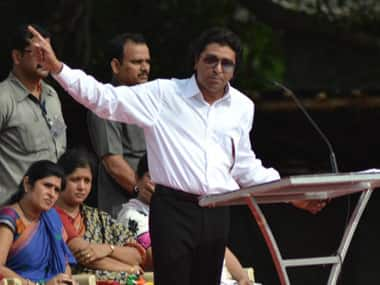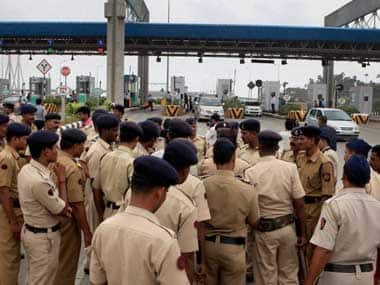Slow, potholed and with more obstacles than anywhere else–the state of the Indian roads sector is as bad as Indian roads themselves. And the attacks on toll booths across Maharashtra by the Maharashtra Navnirman Sena (MNS) may be one of the final nails in the coffin unless remedial measures are quickly put in place. In an environment where the AAP led by Arvind Kejriwal has redefined populism as well as agitations in India, other state governments as well as opposition parties like the BJP are shamelessly copying more than a few pages from AAP’s book, whether it is in the form of electricity tariff reduction where they are robbing Peter to pay Paul, or in toll collection, which has once again come under the spotlight. The common man doesn’t always understand that subsidies in one area means he pays the bill through another route, and neither will he understand why tolls are needed. Political parties like the MNS which are desperately in need of an issue to focus on with upcoming elections in mind, have gleefully jumped into the fray hoping to gain political mileage through this frustration with paying toll. The Maharashtra government, which has rarely demonstrated spine is actually considering reducing toll fees just as it did with power tariff reductions by increasing subsidies, despite knowing it won’t make economic sense and will in reality further stymie development. [caption id=“attachment_1362537” align=“alignleft” width=“380”]  The MNS has told its cadres not to pay toll: Parag Shinde/Firstpost[/caption] The agitators do have a point when they say toll roads are not maintained well despite toll collections, besides being right in demanding greater transparency in toll receipts and project costs so that private companies who are hand in glove with politicians don’t collect more than what is mandated and laugh all the way to the bank. But it is equally true that unless we pay toll, Indians cannot expect newer and better roads. India desperately needs newer roads and improvements to existing roads because world-class roads can bring in development by enabling trade to move faster, helping in safer and quicker movement of people and improving the lives of rural citizens touched by new roads. A study by the International Food Policy Research Institute found that for every Rs 10 lakh spent on roads, 124 people escaped poverty and that every rupee spent on rural roads yielded more than Rs 5 in additional agricultural output. A perfect example is the Mumbai-Pune Expressway, a toll road that has brought much faster development to Pune and the Mumbai-Pune corridor, reducing travel time by more than half–from as much as 6 hours on an unsafe road to around 3 hours on a smooth access-controlled expressway. But as things stand today, agitations like those led by the MNS will further hurt the roads sector. An ICRA Research report in November 2013 paints a gloomy picture: “(The) road sector continued to face headwinds in the form of execution impediments, financing constraints, slowdown in traffic and stressed financial position of the developers. Several projects have faced delays in execution mainly on account of delayed land acquisition, removal of encroachments, shifting of utilities, receipt of approvals and environment clearances, etc. As a result, the execution in National Highways Authority of India (NHAI) projects witnessed a decline in the first 4 months of the current financial year. Many projects which were awarded over the last two years had been facing difficulty in achieving financial closure due to aggressive bidding, uncertainty on land acquisition, pending approvals and increased risk aversion of banks, etc. As of August 2013, financial closure was not achieved for 32 road projects.” As it is, toll collections have been down with the economic downturn. Out of 17 stretches put on auction by the NHAI recently, response was received for 14 as of 13 December, 2013 and NHAI stood to receive 4 percent less overall because only 6 of the 14 stretches received higher offers as compared to the preceding year. Things are set to worsen with the new land acquisition law, The Right to Fair Compensation and Transparency in Land Acquisition, Rehabilitation and Resettlement Act 2013 coming into force a few weeks ago. The new law might require road developers to pay higher levels of compensation which might take the road development business further downhill. To put it simply, risks have gone up significantly, land acquisition is tough and clearances are tough and there are multiple hoops to jump through. Even if there’s a miracle and the developer completes a project on time, if toll collection does not happen, there is no guarantee of getting the money back and hence infrastructure lenders are increasingly wary about the roads sector. And there are enough examples to prove that investor wariness and risk aversion is based on solid evidence. Take Kolhapur, where Ideal Road Builders (IRB) signed a tripartite agreement with the Maharashtra government and the civic body to construct 49 km of roads. When launched in 2009, the project was acclaimed as the first project in India to leverage the Build Operate Transfer (BOT) model for road development inside a city. IRB has been trying to collect toll since 2011 when the project was complete and finally the Bombay High Court had to step in and IRB restarted toll collection after almost a 2-year gap in 2013, but even that was stopped fairly immediately in the face of violent protests backed by political parties. [caption id=“attachment_1362545” align=“alignleft” width=“380”]  PTI[/caption] Out went the innovative model and now the Maharashtra government is contemplating compensating IRB through selling a piece of land to them, which may result in another scam. There’s little chance an infrastructure lender will consider lending to another similar project in Maharashtra after this experience, which in essence means road infrastructure will remain poor as cash strapped governments can’t afford to build world-class roads. In larger cities, perhaps the woes of the Delhi-Gurgaon toll road is a perfect example of the mess. Lenders were staring at massive NPAs (Non Performing Assets)of close to Rs 1,600 crore thanks to a spat between the NHAI and the operator Delhi Gurgaon Super Connectivity (DGSCL). Despite DGSCL building South Asia’s largest toll plaza with 32 lanes at the Delhi-Gurgaon border, traffic snarls stretched for miles during peak hours and the babus at NHAI were upset. Add to this the Indian lack of regard for road rules meant that lanes reserved for quicker contactless card-based payment systems were merrily abused by cash payers. NHAI finally terminated the deal and after a dispute that has already consumed 2 long years, the parties concerned have just announced that the 32-lane toll plaza will be demolished. IDFC, the lead banker of the consortium that lent to DGSCL has now accepted an NHAI Board proposal to remove the current toll plaza at the Delhi-Gurgaon border and only operate another one located 18 kilometres down the road at Kherki Dhaula. The lenders hope that income from the Kherki Dhaula toll plaza would be enough to service the Rs 1,600 crore in loans for the toll road. But given that users will now need to pay for the complete stretch at Kherki Dhaula it remains to be seen if the locals there accept it. The last may not have been heard on this sordid tale from the infamous Indian road sector. Caught between politicians each trying to outdo the other in populist measures with an eye on votes at the cost of everything else, a tougher new land acquisition law, reduced traffic volume thanks to the depressed economy, encroachments that are hard to remove and often supported by politicians, slow clearances and now wary infrastructure lenders on top of all other problems, the Indian roads sector seems well set on the road to hell.
Slow, potholed and with more obstacles than anywhere else–the state of the Indian roads sector is as bad as Indian roads themselves. And the attacks on toll booths across Maharashtra by the Maharashtra Navnirman Sena (MNS) may be one of the final nails in the coffin unless remedial measures are quickly put in place. In an environment where the AAP led by Arvind Kejriwal has redefined populism as well as agitations in India, other state governments as well as opposition parties like the BJP are shamelessly copying more than a few pages from AAP’s book, whether it is in the form of electricity tariff reduction where they are robbing Peter to pay Paul, or in toll collection, which has once again come under the spotlight.
Advertisement
End of Article
Written by Ivor Soans
@IvorSoans on Twitter see more


)

)
)
)
)
)
)
)
)



